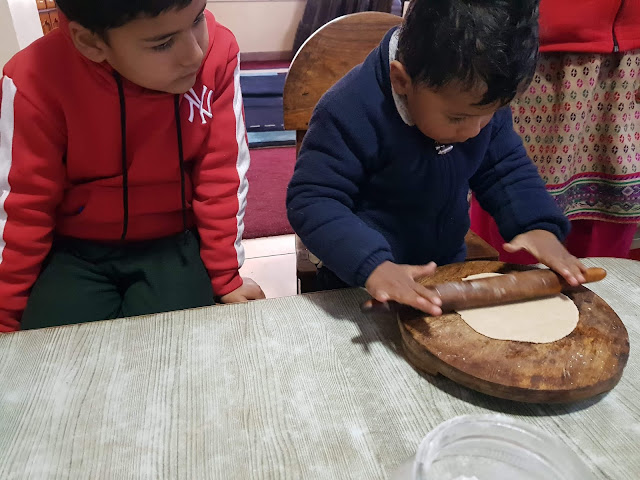Or the black widow killer
by Shila Shrestha
On the afternoon of 24th January, 2020, we found a cockroach. We
collect insects when we find them so we can continue our entomological studies.
As we were putting cockroach inside the plastic container where we save our
samples, I saw a beautiful blue green wasp inside! Someone had found it and put
it in for us to learn about!
We have studied the cockroach several times and we were going to
study a different aspect of it this time but we have never ever done the mud
wasp. So we were excited and asked if we could do the mud wasp study the next
day. I was asked to look up the insect and do some online research beforehand.
January 25. In the morning, our teachers made ready for the wasp
experiment. Our tool box was taken out along with the microscope. A teacher put
the wasp on the circular glass plate. We looked the wasp which was very blue,
green, black and sparkling in color. What an amazingly beautiful insect or
arthropod.
While we were doing artwork Pallav sir researched more about the
wasp. We wanted to know the name, where it lives, its different body parts and
so much more. Sir gave us a well-researched print out to study, discuss, and
make notes on.
We wrote about the details of the wasp. The wasp we had was a mud
wasp, and it is also a black widow killer.
When we took wasp outside in the sun, it looked very shiny due to
ray of sunlight. It sparkled like jewel. So we took photos of the mud wasp, it
was so very beautiful. I had researched the taxonomy of the wasp.
We talked a lot about the mud wasp and what it does, how it lives,
how it helps and why it could sting. It lives on its own, mostly! We looked at
the wasp under the microscope. We looked at the body as well as the head. Little
Zoya who is 14 months old also looked at the wasp through the microscope!
Classification
Scientific name: Chalybion californicum
Scientific name: Chalybion californicum
Kingdom: Animalia (Animal)
Phylum : Arthropoda (Arthropods)
Subphylum: Hexapoda (Hexapods or with six legs)
Class: Insecta (Insect)
Order: Hymenoptera (Ants, bees, wasps and sawflies)
These are things that we wrote in our copy. It was a long class but
very interesting. Then we continued on to our unfinished artwork. We drew the
wasp very nicely, taking a lot of time. We were learning shading, cross hatch,
circular hatch, soft blend in art class and we got to use these technique in
our science class. We wanted to color the artwork! After finishing our artwork
we finished to make notes.
Our experiment class went very smoothly. It was a lot of fun.






















































